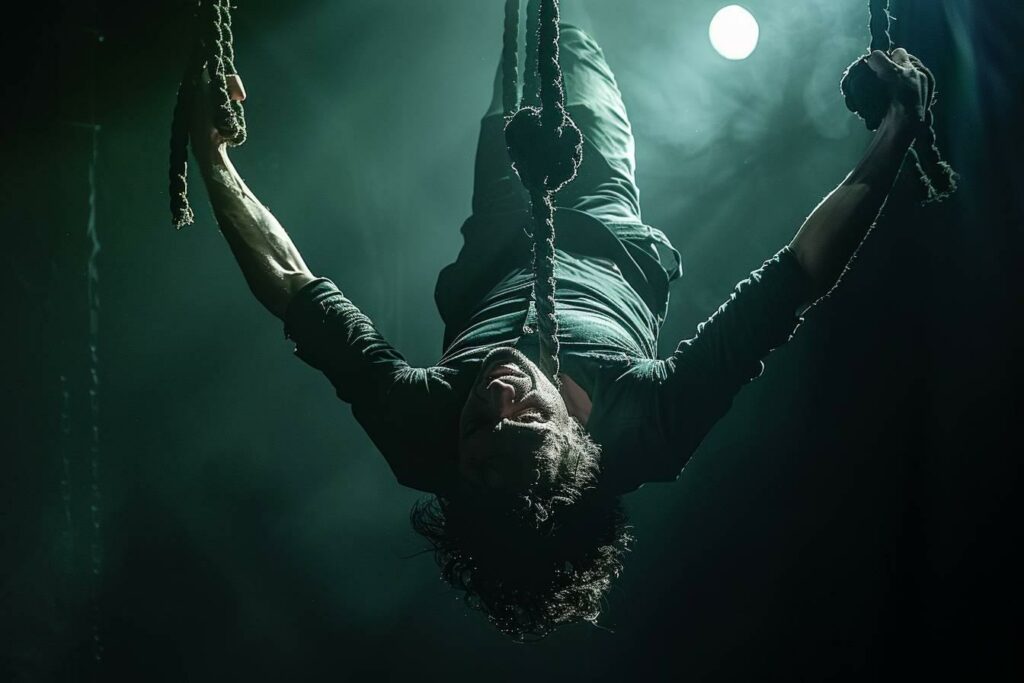Escapology has fascinated audiences for centuries, captivating their imagination with spectacular demonstrations of escape. This enigmatic art combines physical skill, ingenuity and composure to free oneself from seemingly inextricable situations. Let’s dive into the captivating world of the art of escape, its origins, its techniques and its most emblematic artists.
Origins and evolution of escapology
Escapology has its roots in the fairground shows of the 19th century. At that time, illusionists and magicians began to incorporate escapology acts into their performances. However, it was not until the early 20th century that the discipline really took off, driven by emblematic figures who turned it into an art form in its own right.
Harry Houdini, whose real name was Erik Weisz, is undoubtedly the founding father of modern escapology. Born in 1874, this Hungarian-born American artist revolutionized the discipline by constantly pushing back the limits of what was possible. His spectacular escapes from straitjackets, prison cells and submerged crates earned him worldwide renown.
Houdini’s legacy inspires many artists who continue to evolve the art of escape. Among them are :
- Dean Gunnarson, nicknamed “Houdini’s heir”.
- Dorothy Dietrich, a female pioneer of escapology
- David Blaine, who combines extreme endurance and escapology
Over the decades, escapology has diversified, incorporating new constraints and challenges. Contemporary artists often combine traditional techniques with modern technologies to create ever more spectacular and risky acts.
Techniques and principles of escapology
Escapology is based on a set of fundamental skills and principles. Performers must master both physical and mental skills to succeed in their escapes. Here’s an overview of the main techniques used:
1. Handling locks and handcuffs: Escapologists excel in the art of lockpicking, using miniature tools often concealed on their person. They need to be intimately familiar with the mechanisms of different types of locks to open them quickly.
2. Contortionism: bodily flexibility is crucial to freeing oneself from physical constraints such as ropes or straitjackets. Artists train intensively to increase their flexibility.
3. Breathing control: For underwater or apnea escapes, breath control is vital. Escapologists develop exceptional lung capacity and advanced relaxation techniques.
4. Psychology and staging: The art of escape also relies on the ability to manage stress and maintain composure in the face of danger. Staging and audience interaction are also essential to creating a captivating performance.
| Competence | Importance | Example of application |
|---|---|---|
| Manual dexterity | High | Lock handling |
| Physical stamina | Medium | Prolonged escapes |
| Stress management | Very high | Situations of real danger |

The emblematic challenges of escapology
The history of escapology is littered with memorable challenges that have left their mark on the collective imagination. These extreme tests highlight the courage and ingenuity of the artists, while pushing back the limits of what is possible. Here are some of the discipline’s most emblematic challenges:
The suspended straitjacket: Popularized by Houdini, this escape involves freeing oneself from a straitjacket while suspended by the feet above the void. The act combines physical strength, flexibility and stress management.
Water escape: Escapologists are locked in sealed containers (crates, tanks) filled with water. The challenge is to escape before the air runs out. The challenge is to escape before the air runs out. This event requires perfect mastery of apnea and great lucidity under pressure.
The prison cell: Freeing yourself from a real prison cell, sometimes after a meticulous search, is a major challenge. It tests the artists’ ability to hide and manipulate locks.
Live burial: Some escapologists go to the extreme of being buried alive, having to escape from sealed coffins buried underground. This type of performance requires exceptional mental preparation and meticulous management of time and oxygen.
These challenges, though spectacular, involve real risks. The artists work with safety teams and meticulously prepare each performance to minimize the dangers. Nevertheless, the history of escapology is also marked by tragic accidents, reminding us of the perilous nature of this art form.
Escapology in the 21st century: between tradition and innovation
The art of escapology continues to evolve in the 21st century, adapting to new technologies and the expectations of an increasingly demanding public. Contemporary escapologists are constantly innovating to create unique and memorable performances.
Integrating new technologies: Some artists incorporate high-tech elements into their acts, such as electronic locks, surveillance systems or even virtual reality. These innovations add a modern dimension to the traditional art of escapism.
Extreme endurance challenges: Inspired by performers like David Blaine, many escapologists now combine the art of escape with prolonged endurance challenges. These performances can last several days, pushing the physical and mental limits of the performers.
Raising awareness of social causes: Some escapologists use their art to draw attention to societal issues. For example, symbolic escapes from cages or chains are sometimes performed to denounce oppression or promote freedom.
Modern escapology thus finds itself at the crossroads between :
- Respect for traditional techniques
- Technological innovation
- Social commitment
- Spectacular entertainment
This evolution allows the art of escapology to remain relevant and captivating for new generations, while honoring the legacy of pioneers like Houdini. Escapology thus continues to fascinate, question and inspire, proving that theart of freeing oneself from constraints, whether physical or metaphorical, remains deeply rooted in the collective imagination.

